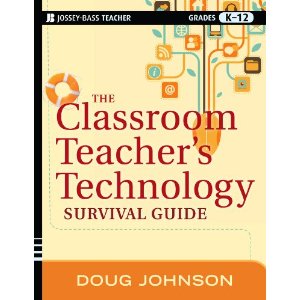Sophistication and simplicity - can you have it both ways?
 Thursday, January 4, 2018 at 05:33AM
Thursday, January 4, 2018 at 05:33AM One of the main premises of the book is that although people are often keen to blame themselves when objects appear to malfunction, it is not the fault of the user but rather the lack of intuitive guidance that should be present in the design. Wikipedia entry for The Design of Everyday Things by Donald Norman

This old cartoon came to mind when thinking about a new-ish AV system we have in some meeting rooms at our district offices.
The room in which our school board meets is connected via sliding walls to two other large rooms. The advantages are obvious - when there is a large gathering a huge room can be created. When there is a need for space for multiple meetings, we can have that as well. Flexibility.
The difficulty we have had is providing a flexible means of controlling the sound and projection systems in these rooms. A single audio source - computer or microphone - needs to be heard on the speakers in either one, two, or three rooms depending on the setup. A single video source needs to be shown on between one and eight projectors and monitors depending on the setup. (Add to this, additional audio and visual recording and transmission needed for school board meetings which are broadcast over community television.)
The consultants put in a clever system using software on wall mounted iPads that allows us to do this. Serving as touch panels, the user can select the input and output sources needed for the particular event. When it works, it works like magic. When it doesn't work or if the user is unfamiliar with the system, frustration mounts. Often these rooms are used in the evenings, outside our tech staff's regular hours.
This dilemma - the need for both sophistication and simplicity - is increasing during what feels like a very rapid, transitional time in technology evolution. Automobiles now have complex systems that control audio, navigation, and who knows what else, but they don't yet have a Siri-type AI that allows the driver to simply say "Please play NPR at a medium volume" or "Give me the GPS directions to the nearest gas station." We still need to know what buttons to push and in what order.
It's lovely to have highly-functional technologies. It's not so lovely to need a programming degree and the patience of Job to operate them.
Do we, when selecting resources for our schools (or homes) ever make simplicity a criteria when making the choice - or do we always just go for the product with the most bells and whistles?
I am going to find my old copy of Donald Norman's wonderful book The Design of Everyday Things. I may be worth a re-read.
Oh, Alexa, learn quickly, please









Reader Comments